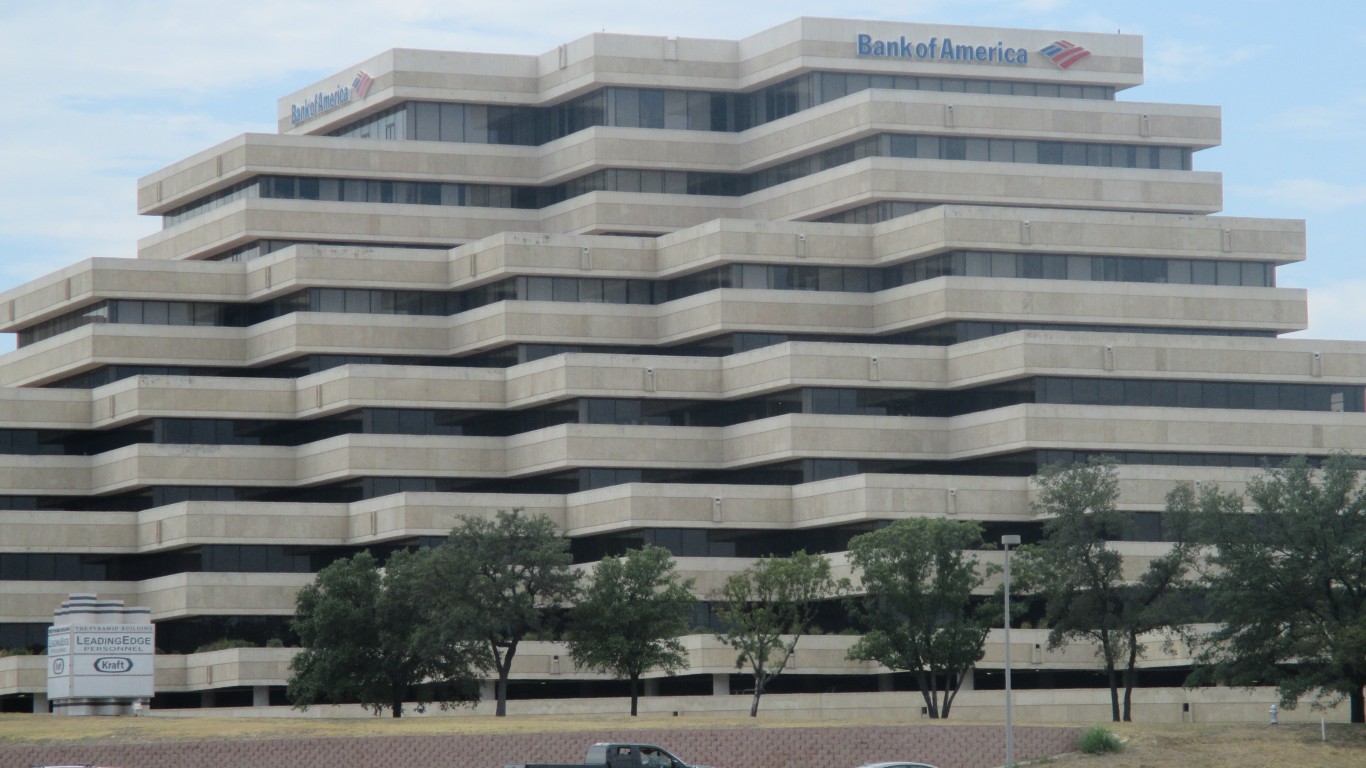Banking, finance, and taxes
What Propped Up Bank of America Earnings

Published:
Last Updated:

Bank of America Corp. (NYSE: BAC) reported second-quarter 2018 results before markets opened Monday. The big bank reported diluted earnings per share (EPS) of $0.63 on net revenue of $22.6 billion. In the same period a year ago, it reported EPS of $0.44 on net revenue of $22.8 billion. Second-quarter results also compare to the consensus estimates for EPS of $0.57 on revenue of $22.3 billion. Revenue totals are net of interest expenses.
Net income rose 33% year over year to $6.8 billion, just short of the first-quarter all-time record of $6.9 billion. Net interest income rose by $664 million year over year, and non-interest income fell by $884 million. Income tax expense fell by $1.3 billion year over year. Non-interest expense rose by $377 million. Nearly $1.1 billion of the $1.7 billion increase in net income for the year is down to lower taxes.
Credit loss provision totaled $827 million in the quarter, up by $101 million (14%) compared with the same period in 2017. In the consumer banking division, credit loss provision rose by $110 million year over year.
Net charge-offs increased by $88 million to $896 million and the net charge-off ratio rose from 0.40% to 0.43% year over year. The quarter’s net reserve release totaled $169 million, down from $182 million a year ago driven by “continued improvements in consumer real estate and energy exposures, partially offset by continued seasoning in the consumer card portfolio and loan growth.”
CEO Brian Moynihan said:
Solid operating leverage and client activity drove earnings higher this quarter. Responsible growth continued to deliver as a driver for every area of the company. We grew consumer and commercial loans; we grew deposits; we grew assets within our Merrill Edge business; we generated more net new households in Merrill Lynch; and we supported more institutional client activity — all of this while we continued to invest in our businesses and began an additional $500 million technology investment, which we intend to spend over the next several quarters, due to the benefits we received from tax reform.
The bank did not provide guidance in its earnings release. The consensus estimate for third-quarter EPS is $0.64 on revenues of $23.06 billion. For the full 2018 fiscal year, the consensus calls for EPS of $2.48 on revenues of $91.59 billion.
Shares traded higher by about 0.7% in Monday’s premarket at $28.55. The current 52-week range is $22.75 to $33.05. Thomson Reuters had a 12-month consensus analyst price target of $34.43 before results were announced.
Thank you for reading! Have some feedback for us?
Contact the 24/7 Wall St. editorial team.